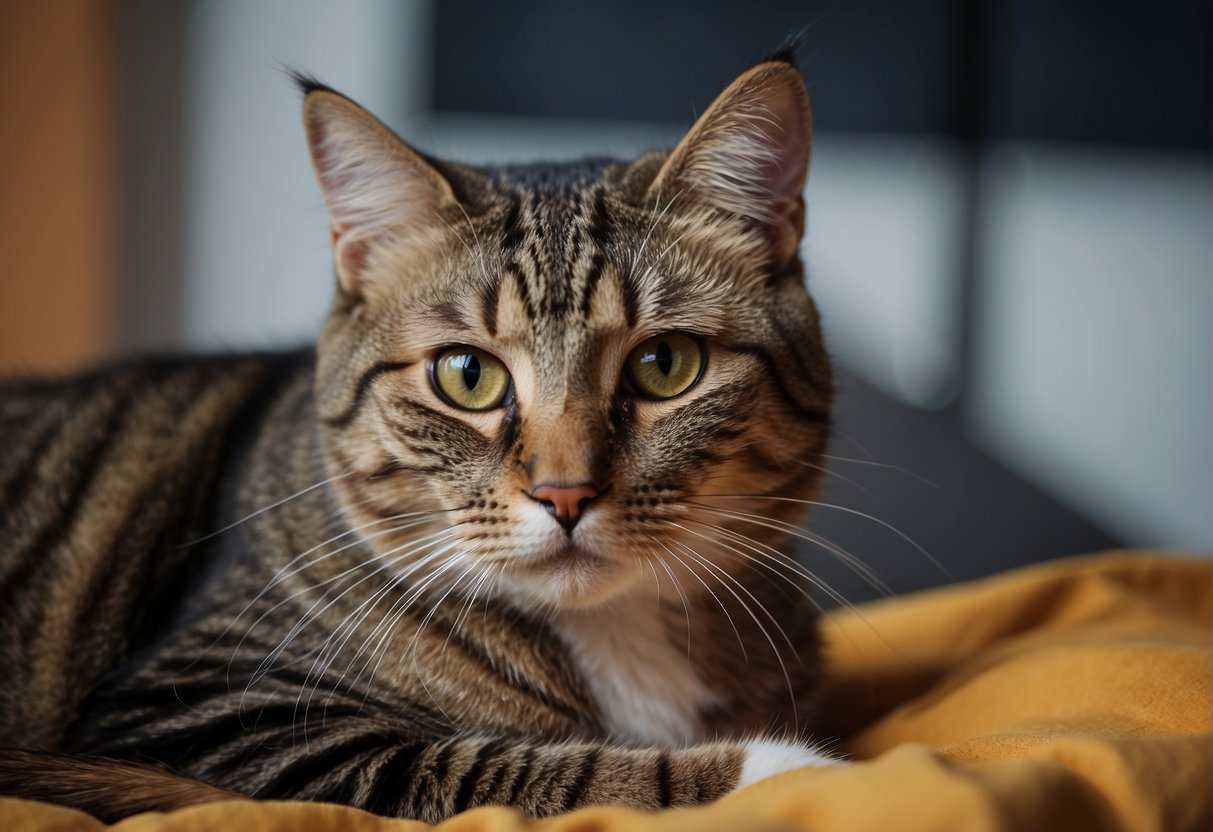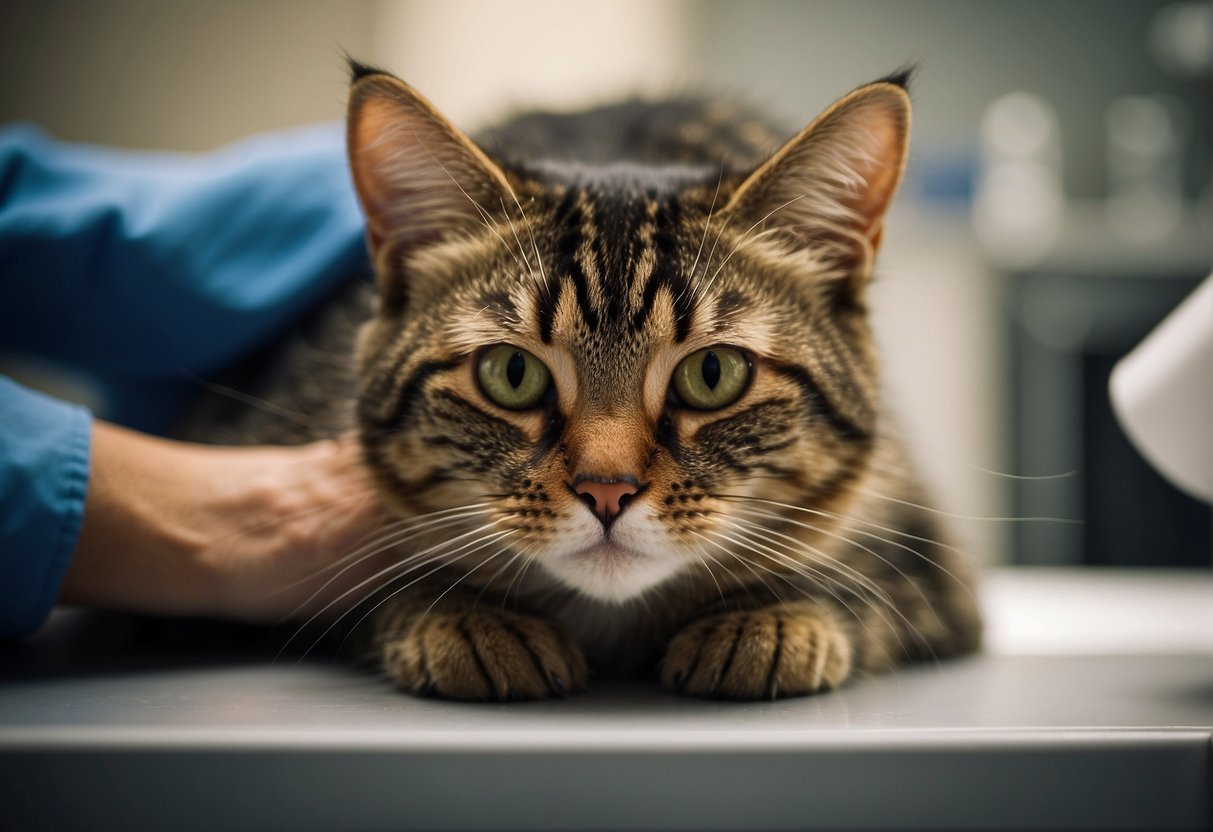Feline Infectious Peritonitis, commonly known as FIP, is a challenging disease that affects cats and is caused by certain strains of the feline coronavirus. When you have a multicat household, it’s especially important to understand how this disease is transmitted.
Typically, cats catch the feline coronavirus through close contact with infected feces, which often occurs when they share litter boxes or during grooming.

While most strains of the virus usually cause no significant harm, certain mutations can lead to the development of FIP.
For example, if you notice one of your cats is not quite themselves—perhaps they’re eating less or showing signs of lethargy—it could be an early sign of a more serious condition, although these symptoms can be attributed to many other ailments as well.
The environment plays a role too. The feline coronavirus can survive on surfaces for quite some time, meaning that cats can become infected without direct contact with an infected cat. This is why keeping your living space clean can help reduce the risk.
And remember, while FIP is a serious disease, understanding its transmission routes can help you take preventative measures to protect your feline companions.
Understanding FIP in Cats

Feline Infectious Peritonitis (FIP) is a complex viral disease, feared for its aggressiveness. It starts with feline coronavirus (FCoV) infection, which can, unfortunately, mutate leading to FIP—especially in young cats living in multi-cat environments like shelters or catteries.
Causes and Transmission
FIP occurs when the usually benign feline enteric coronavirus (FCoV) mutates within your cat’s body and triggers a severe immune response. Although FCoV is common in multi-cat environments and often causes mild symptoms, its mutation to FIP is rare and not fully understood.
It’s thought that the mutation allows the virus to invade and grow in certain white blood cells, which spread the infection via the bloodstream.
- Transmission of FCoV:
- Close contact with infected feces
- Sharing litter boxes, food, and water dishes
- Crowded living conditions can increase exposure and stress, which may affect the cat’s immune system
While it’s not typically considered highly contagious, FIP is a concern in shelters and catteries where infectious diseases spread more easily due to closer quarters.
Types of FIP
FIP can present itself in two main forms: effusive (wet) and non-effusive (dry), depending on the type of immune response.
- Effusive (Wet) FIP: Your cat’s body produces a significant amount of fluid that accumulates in body cavities like the abdomen or chest, leading to breathing difficulties or a distended stomach.
- Non-Effusive (Dry) FIP: Fewer signs may be visible, but it affects organs like the kidneys, liver, and brain, causing a range of symptoms from jaundice to neurological issues.
Symptoms and Clinical Signs
Recognizing the signs of FIP can be challenging, as they often mimic other diseases. Early detection is key for managing the disease.
- General symptoms include:
- Wet FIP: Swollen abdomen, difficulty breathing, lethargy, weight loss
- Dry FIP: Fever, weight loss, jaundice, eye inflammation, uncoordinated movement or seizures
Diagnosis and Treatment
When your cat shows signs that may indicate feline infectious peritonitis (FIP), it’s crucial to seek veterinary attention promptly. Early and accurate diagnosis, followed by proper treatment, increases the chances of managing this serious condition.
Your vet will focus on a comprehensive evaluation and suggest supportive care options to improve your feline friend’s quality of life.
Veterinarian Evaluation and Tests
Your vet will start with a thorough physical examination, looking for clinical signs like fever, weight loss, difficulty breathing, and jaundice. Since FIP is known for causing fluid build-up in the abdomen or chest cavity, this will be a pivotal point of the examination.
Blood tests will measure abnormalities in blood cells that suggest inflammation. More specific tests like a polymerase chain reaction (PCR) can detect the genetic material of viruses, and a biopsy from affected tissues can provide definitive evidence of the disease.
- Blood Tests: Check for anemia, elevated proteins, and signs of inflammation.
- Biopsy: Tissue samples from the liver or kidneys may display characteristic inflammation.
- PCR Testing: Can detect coronavirus strains responsible for FIP.
Managing FIP and Supportive Care
If your cat is diagnosed with FIP, know that while FIP has been a challenging disease to treat, advancements have been made.
The antiviral medication GS-441524 has shown promising results in the treatment of FIP. Despite being non-approved by certain regulatory agencies, this drug has become available through different avenues for compassionate use and has saved lives.
Supportive care, meanwhile, is focused on alleviating symptoms and includes:
- Medications: To control fever, pain, secondary infections, and inflammation.
- Draining fluids: To reduce pressure in the abdomen or chest cavity if there’s fluid build-up.
- Dietary Support: A nutrient-rich diet can support the immune system and help combat weight loss.
Prevention and Management
Managing the risk of FIP in your cat encompasses both proactive measures and environmental management. Staying informed and conscientious about these strategies is key to preventing illness.
FIP Vaccination and Best Practices
A vaccine aimed at preventing FIP does exist, though its use is somewhat controversial as its effectiveness has been debated.
Consult with your veterinarian, and if you opt for a vaccination, ensure it is administered based on the guidelines recommended by the American Association of Feline Practitioners. Besides vaccination, best practices in preventative care include:
- Maintaining regular vet check-ups for health assessment
- Keeping your cat’s vaccinations up to date for general health
- Minimizing stress which can be immunosuppressive and contribute to disease manifestation
- Observing your cat closely for any signs of illness, particularly after events like surgery or grooming when they may be more susceptible
Environmental Control and Hygiene
Your cat’s environment plays a significant role in preventing the spread of feline coronavirus, which can mutate into FIP. Feline coronavirus is often spread through feces, so excellent litter box hygiene is essential. Here are some concrete steps to maintain cleanliness and manage the environment:
- Clean litter boxes daily to reduce the risk of fecal contagion
- If you have multiple cats, more litter boxes can help (rule of thumb: one box per cat, plus one extra)
- Regular cleaning and disinfecting of your home, with a focus on areas where your cat spends a lot of time
- Proper management of multi-cat environments, including spacing of food and water bowls to prevent cross-contamination
- Reduce overcrowding in spaces like shelters or boarding facilities to decrease stress and lower the risk of transmission
FIP and the Broader Feline Health Context
As a cat owner, understanding Feline Infectious Peritonitis (FIP) helps you grasp how this viral disease fits within the overall health landscape of our feline friends. It’s a condition that prompts many questions due to its complex nature.
Relation to Other Feline Diseases
FIP is caused by a mutation of the feline coronavirus (FeCV), a virus that normally resides in the intestinal tract.
Not all coronaviruses are serious; many cause mild symptoms. However, once mutated, FeCV leads to FIP, which can affect various organs and vessels in your cat’s body. FIP is unique among feline diseases due to its two forms: wet (effusive) form and dry (noneffusive) form.
- Wet form: You might notice symptoms like an accumulation of fluid in the abdomen or chest, leading to distress.
- Dry form: Signs can include weight loss, lethargy, and loss of appetite, but without the fluid accumulation.
Breeds such as Abyssinian, Bengal, Birman, Himalayan, and Ragdoll may show a predisposition to FIP, though all cats can be at risk.

My name is James, and welcome to FAQCats!
Along with our team of cat owners, expert pet enthusiasts, and pet professionals, we aim to write engaging helpful, engaging content about cats. At FAQCats we strive to provide content that’s accurate and fun to read. Our team writes about everything related to cats; even the most complex of topics. Through extensive research and caring for our own fur-pals, we’re able to provide something cat owners worldwide will love. Have a look around, and leave us feedback anytime!

